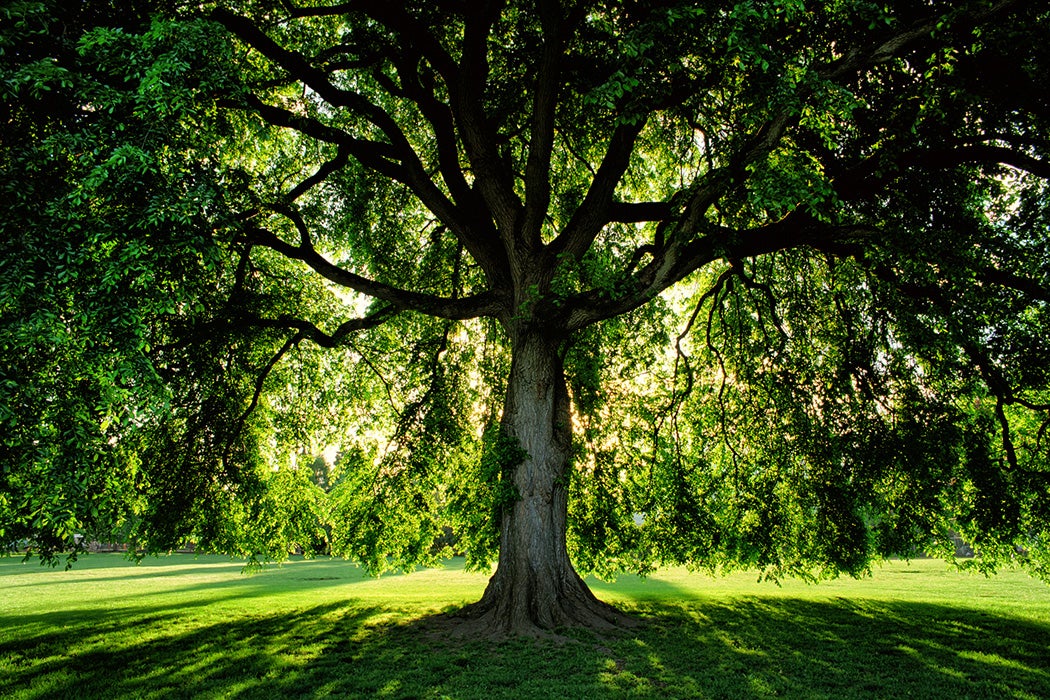When you walk through the woods, or around your neighborhood, do you recognize the trees you see? It might seem like knowing the names of trees has no particular value. But philosopher Christian Diehm argues that distinguishing species may offer a different way of seeing “nature” that could transform our view of the world around us.
To many of us in the modern West, Diehm suggests, “nature” is “a more or less homogenous mass, with only the grossest distinctions apparent: here are flowers, here are shrubs, birds flit about among them.” That’s nothing new. Diehm notes that Alice Lounsberry’s A Guide to Trees, published in 1900, describes trees as “so close at hand that we almost find ourselves in danger of becoming oblivious to their presence.”
Learning to differentiate specific trees can be tricky, even with a field guide in hand. Leaves from two different species can look very similar, while a single species—or even a single tree—can have leaves that vary in size and shape.
Differences in bark can help an experienced observer zero in on a tree’s name, Diehm writes. But bark also changes as trees age. Shagbark hickory has a distinctive look—but only when it’s mature. Similarly, if you want to record a message for the ages by scratching a heart and initials into the smooth bark of an American beech, you might mistakenly choose a young red maple and find a few years later that the cracking bark has obscured your message.
Diehm suggests that this difficulty is actually part of what makes identifying trees a valuable pursuit, demanding a particular sort of attention.
“It involves an awareness of both the seasonal cycles of tree species, and the larger phases of growth and development into which those cycles fit,” he writes. “It is notable, too, that becoming aware of the distinctive biological realities of trees involves developing an aesthetic sensitivity to the shapes, colors, and textures in which those realities find expression.”
Learning the name of a tree often means learning something about it. Some names, like sugar maple and broom hickory, speak to the uses humans make of those trees. Others, like river birch and moosewood, imply trees’ relationships with local geography or other forms of life.
Weekly Newsletter
Of course, trees are important to our lives whether we notice them or not. They supply us with the boards we build our homes with and the oxygen we breathe. But, Diehm writes, trees exist not for our use but for their own purposes. The lightweight strength of wood makes it wonderful for construction, but, from the trees’ perspective, that physical characteristic is what it takes to grow upward, lofting leaves toward the sunlight.
When we get to know trees, Diehm suggests, we may begin to look at them differently: “Each tree, we will want to assert, is a wonder, a real-life marvel making a way through the world, fully deserving of admiration and respect on its own terms.”
Support JSTOR Daily! Join our new membership program on Patreon today.







